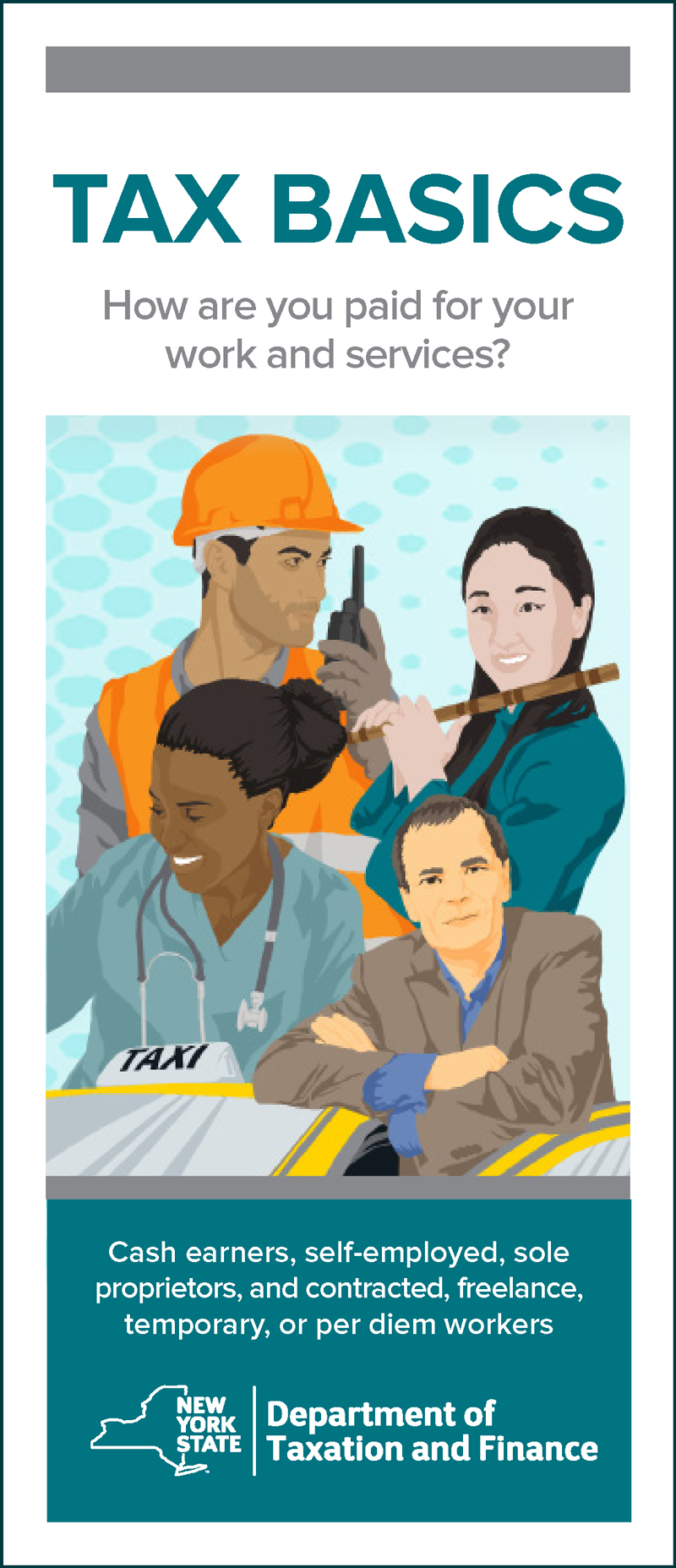Subscribe
Sign up to receive Tax Tips for Individuals.
Generally, you are self-employed if any of the following apply:
Self-employed individuals typically find their own work rather than being provided with work by an employer. They earn income from a service, trade, or business they operate.
Examples of workers who may be considered self-employed include:
Employers usually withhold taxes on their employee’s wages, submit those taxes, and provide a Form W-2 to their employee at the end of the year.
However, if you are classified as self-employed, you’re responsible for:
You must report all income you receive during the year to the New York State Tax Department no matter how you receive it—by check, cash, direct deposit, prepaid card, or any other method. Your income may or may not be reported to you on Form W-2 or Form 1099. You may owe tax on income you received during the year, which can be paid by:
Estimated tax is the method used to pay tax on income when no tax—or not enough tax—was withheld.
You may be required to make estimated tax payments if:
Generally, you must make your first estimated tax payment for the year by April 15. You can either pay all your estimated tax with this first payment, or pay it in four equal installments on April 15, June 15, September 15, and January 15.
You should use Form IT-2105-I, Instructions for Form IT-2105, Estimated Tax Payment Voucher for Individuals, to calculate your estimated tax payments.
You can pay electronically, check balances, and view your estimated tax account by creating an Online Services account.
You can also pay using Form IT-2105, Estimated Tax Payment Voucher for Individuals. This payment voucher is required if you mail your payment.
You may be charged a penalty on the amount of estimated tax you did not pay or paid late during the year, plus interest. See Form IT-2105.9-I, Instructions for Form-IT-2105.9 Underpayment of Estimated Tax by Individuals and Fiduciaries.
Maintain good books and records to show income earned and expenses paid each day. The records should contain enough information to correctly determine your gross receipts, self-employed or business expenses, and inventory and asset purchases. Keep receipts and other documents that support each entry in your log. Examples include:
You must be able to substantiate entries on your tax return to deduct or claim them, including expenses, deductions, and credits.
You may be asked to produce your records up to three years after you file your return.
As a self-employed individual or business owner, you may be required to collect and remit sales tax to New York State, in addition to estimated income tax.
Sales tax applies to retail sales of certain tangible personal property and services. TB-ST-175, Do I Need to Register for Sales Tax, and TB-ST-740, Quick Reference Guide for Taxable and Exempt Property and Services provide basic, easy-to-understand explanations of sales tax obligations.
The Tax Department has a wide range of programs and services to assist taxpayers in meeting their tax obligations:
For more information see, Estimated taxes.
For instructions and worksheets to help calculate estimated tax, and good recordkeeping tips, see:
For information on sales and use tax, see:
If your 2024 wages were less than $200,000—or $250,000 if you’re filing a joint return—you may qualify to use Direct File. See if you're eligible!
If your 2024 federal adjusted gross income was $84,000 or less, you may qualify to use Free File software to e-file both your federal and state returns—at no cost.
E-filing is the fastest, easiest, and safest way to file your return. Most e-filers get their refund two weeks sooner than paper filers.
Sign up to receive Tax Tips for Individuals.
